Physical Address
304 North Cardinal St.
Dorchester Center, MA 02124
Physical Address
304 North Cardinal St.
Dorchester Center, MA 02124
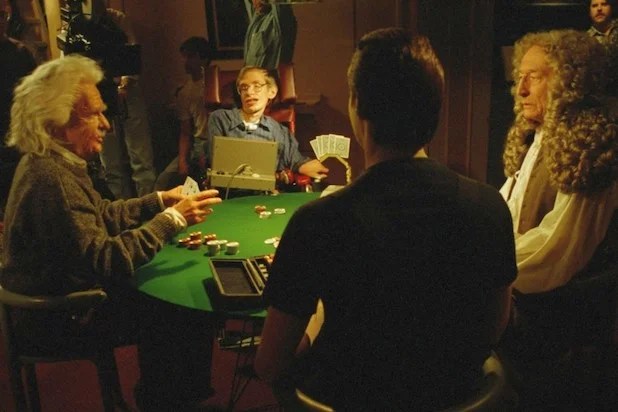
Stephen Hawking, one of the most brilliant minds of our era, left an indelible mark not just on science, but also on popular culture. His cameo appearance on Star Trek showcased his unique blend of intellect and humor, while his roles in other shows, like The Simpsons, introduced him to new generations. A deep look into his iconic Star Trek episode, the cast of Descent, Part 2, and his other media appearances reveals how he became a pop culture icon. Alongside these highlights, exploring Hawking’s early life, the onset of his ALS, and his personal relationships offers a fascinating portrait of the man beyond the legend.
Stephen Hawking, the renowned physicist and cosmologist, made a memorable cameo on Star Trek: The Next Generation in the episode “Descent, Part 1” (Season 6, Episode 26). In this fun and iconic scene, he appears as himself playing poker on the holodeck alongside Lt. Commander Data, Isaac Newton, and Albert Einstein. This unique moment was born from Hawking’s own interest in being part of the show, and he even contributed ideas to the script. The poker game symbolizes a playful meeting of some of history’s greatest scientific minds, highlighting Hawking’s legacy as a brilliant thinker who made complex science accessible and engaging. His appearance was not just a nod to his fame but also a celebration of his curiosity and intellect, fitting perfectly within the Star Trek universe’s spirit of exploration and discovery. Hawking’s presence on the show remains a beloved moment for fans, blending science fiction with real-world genius in a way that feels both inspiring and delightfully human.
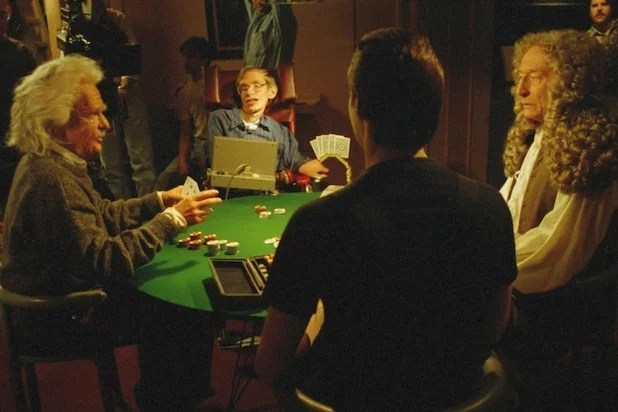
Stephen Hawking made a unique and memorable cameo in the Star Trek: The Next Generation episode “Descent, Part 1,” which aired in 1993. In a delightful opening scene, he appears as himself playing poker on the holodeck alongside Lt. Commander Data and holographic versions of Sir Isaac Newton and Albert Einstein. The scene is both playful and clever, with Hawking cracking science jokes and even winning the game with four sevens. This cameo stands out because Hawking is the only person in Star Trek history to play himself, blending real-world science with the show’s futuristic setting.
Hawking’s appearance came about after he visited the Star Trek sets while filming a promotional video for his book. He expressed interest in being part of the show, and the writers crafted the poker game scene to showcase his wit and intellect. The episode’s cast and crew were thrilled to meet him, making it a special moment behind the scenes as well. This brief but iconic cameo perfectly captured Hawking’s playful spirit and helped popularize science in a fun, accessible way.
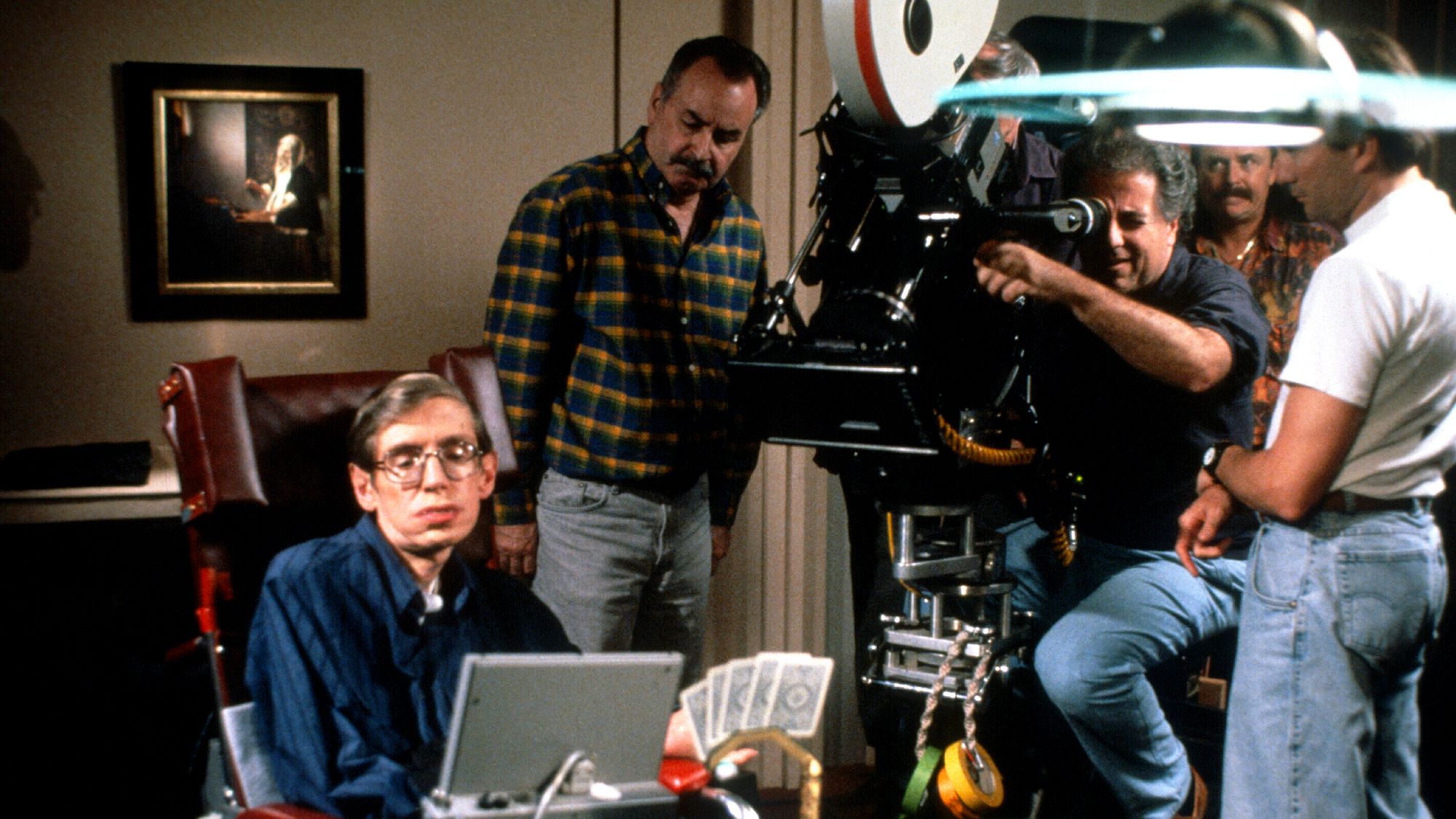
The cast of Star Trek: The Next Generation – Descent, Part 2 features the core ensemble that fans love, led by Patrick Stewart as Captain Jean-Luc Picard. Alongside him are Jonathan Frakes as Commander William Riker, LeVar Burton as Geordi La Forge, Michael Dorn as Worf, Gates McFadden as Dr. Beverly Crusher, Marina Sirtis as Counselor Deanna Troi, and Brent Spiner in a dual role as Data and his darker brother Lore. This episode also brings back Jonathan Del Arco as Hugh, the Borg drone who gained individuality in an earlier episode, adding depth to the Borg storyline.
Supporting roles include Alex Datcher as Ensign Zandra Taitt, James Horan as Lieutenant Barnaby, and others who contribute to the rich tapestry of the story. Majel Barrett provides the voice of the ship’s computer and narration, maintaining her iconic presence in the series. The cast’s dynamic performances help explore complex themes like Data’s struggle with emotions and the evolving nature of the Borg collective. Overall, the ensemble’s chemistry and the return of key characters make Descent, Part 2 a memorable chapter in the Star Trek saga.
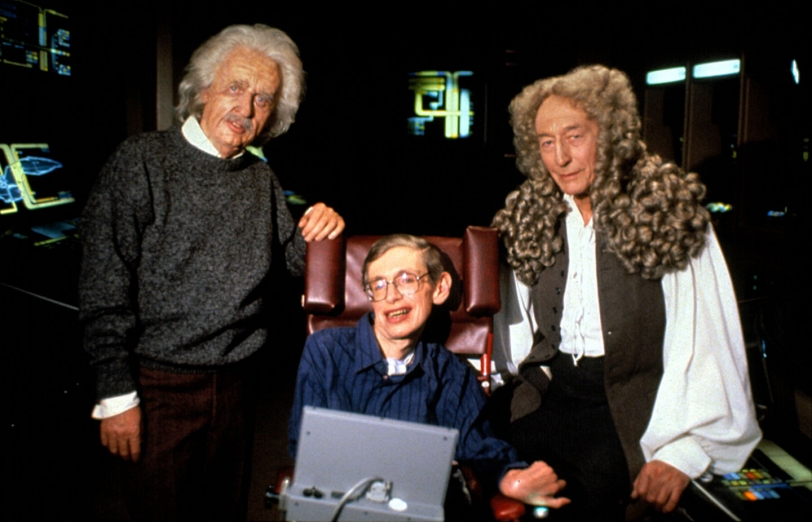
Stephen Hawking made several memorable appearances on The Simpsons, where he played himself with his signature wit and charm. His first cameo was in the season 10 episode “They Saved Lisa’s Brain,” where he visits Springfield after Lisa and the local Mensa members take over the town. Hawking humorously critiques their utopian ideas, calling the town more of a “fruitopia” and delivering a classic line about his own scientific struggles compared to theirs. He also offers Lisa some sage advice, showing his playful side with a witty comeback when she asks if it applies to him too.
Hawking was very particular about how he was portrayed on the show. For instance, he insisted on not being shown drunk, even though he was fine with sharing a beer with Homer at Moe’s. This condition reflected his careful control over his image, especially given his ALS condition and use of a voice synthesizer. Beyond The Simpsons, he also appeared in Futurama and The Big Bang Theory, blending his scientific genius with pop culture humor. His appearances brought a unique blend of intellect and comedy, making him one of the most beloved guest stars in the show’s history.
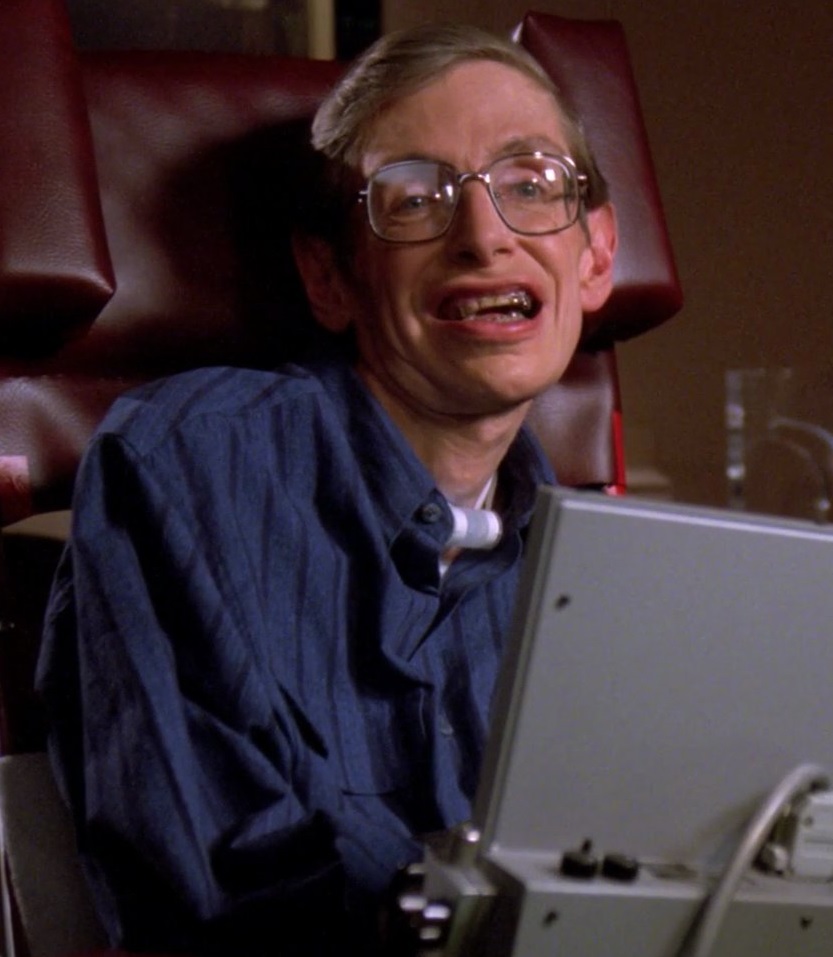
Stephen Hawking was born in Oxford in 1942 and showed an early interest in science, especially physics and mathematics. He went to University College, Oxford, at 17, where he studied physics, and later moved to Cambridge for his PhD in cosmology. During his early 20s, he was diagnosed with amyotrophic lateral sclerosis (ALS), a serious disease that affects the nerves controlling muscles. Despite doctors predicting only a few years to live, Hawking’s condition progressed slowly, and he continued his studies and research with determination.
At Cambridge, he initially struggled with his studies and felt discouraged, but encouragement from his supervisor, Dennis Sciama, helped him push forward. He made important contributions to understanding black holes and the origins of the universe, completing his PhD thesis on expanding universes in 1965. Hawking was known for his sharp mind and confidence, famously challenging established scientists when he thought they were wrong. His early academic years laid the foundation for a remarkable career that combined deep scientific insight with resilience and humor, inspiring many around the world.
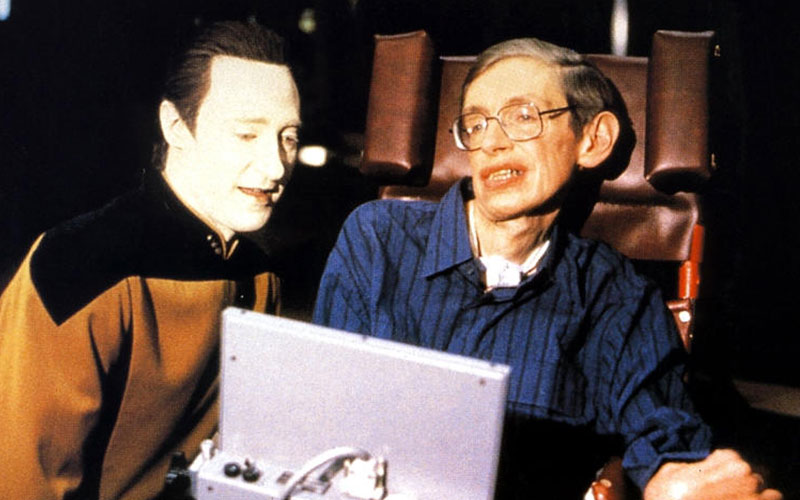
Before being diagnosed with ALS, Stephen Hawking was already a bright and curious young man with a passion for understanding the universe. Born in 1942 in Oxford, England, he initially wanted to study mathematics but ended up pursuing physics at Oxford University, where he earned a first-class degree in natural sciences. He then moved to Cambridge to study cosmology, diving deep into the mysteries of space, time, and black holes. Even in his early twenties, Hawking was making significant strides in theoretical physics, exploring how the universe began and how black holes behave.
During this time, he was active and engaged in academic life, showing a lively interest in the big questions about the cosmos. His work was already groundbreaking, setting the stage for his later discoveries about black holes emitting radiation, now known as Hawking radiation. Physically, he was healthy but had started noticing subtle symptoms like occasional tripping and slurred speech, which he initially kept to himself. It wasn’t until his early twenties, during his first year at Cambridge, that these symptoms led to the diagnosis of ALS, a disease that would dramatically change his life but never his spirit or intellect.
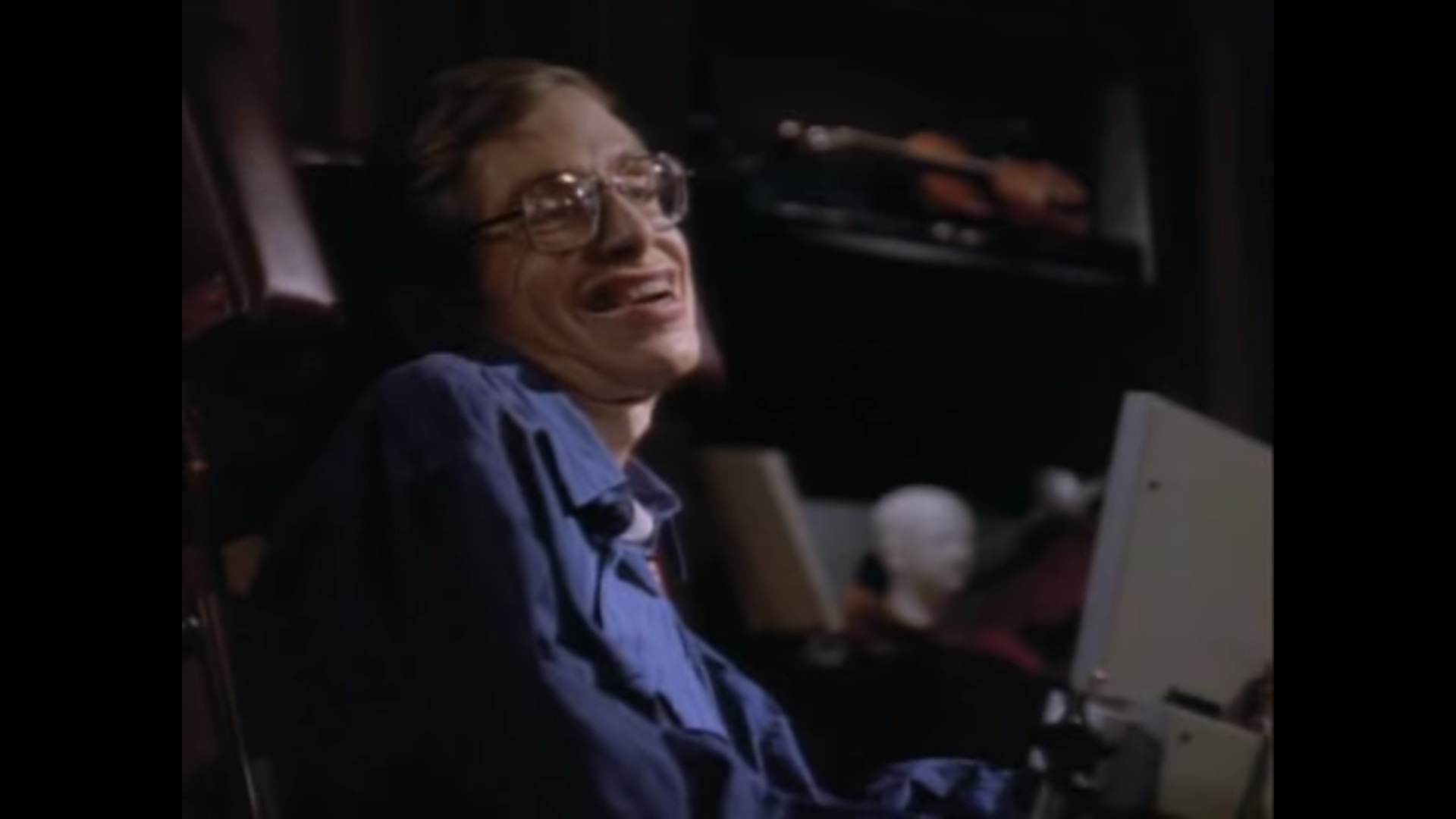
Jane Hawking, originally Jane Wilde, was Stephen Hawking’s devoted wife for 30 years. They met as students in the early 1960s, just before Stephen was diagnosed with motor neuron disease, a condition doctors said would limit his life to only a few years. Despite this, Jane stayed by his side, marrying him in 1965 and supporting him through his groundbreaking scientific work and the progression of his illness.
Throughout their marriage, Jane balanced caring for Stephen and raising their three children while pursuing her own academic interests, eventually earning a doctorate in medieval Spanish poetry. She was not only a caregiver but also a strong, independent woman who sought to live a full life despite the challenges. Their relationship was complex, marked by love, sacrifice, and later difficulties that led to their divorce in 1995 after Stephen left her for one of his nurses.
Jane’s story is one of resilience and compassion, showing how she managed a demanding family life alongside Stephen’s rising fame. She has also spoken about how films about their life sometimes miss the full reality of her experience as a caregiver.
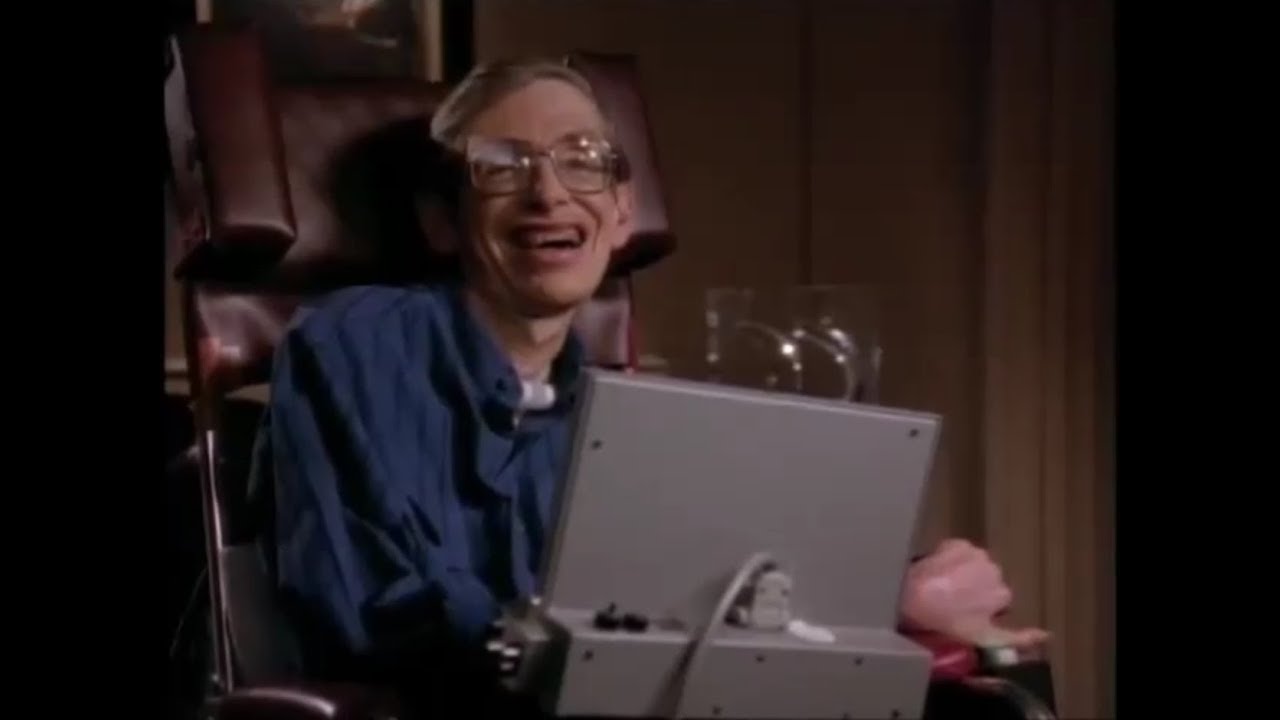
Stephen Hawking’s disease, known as Amyotrophic Lateral Sclerosis (ALS) or Lou Gehrig’s disease, is a progressive neurological condition that gradually destroys motor neurons in the brain and spinal cord. These neurons control muscle movement, so as they deteriorate, people with ALS experience muscle weakness, twitching, difficulty speaking, swallowing, and eventually breathing. Despite this, ALS does not affect a person’s intelligence or memory.
Hawking was diagnosed with ALS at age 21 and was initially given only a few years to live. Remarkably, he lived with the disease for over 50 years, far exceeding typical survival times. His muscles slowly weakened, and he lost most voluntary movement, relying on technology to communicate and continue his groundbreaking work in physics. ALS usually progresses at different rates in different people, but it ultimately leads to paralysis and respiratory failure.
While there is no cure for ALS, treatments like physical therapy, speech therapy, and ventilators can help manage symptoms. Hawking’s life showed incredible resilience and the power of human ingenuity in facing such a challenging disease.
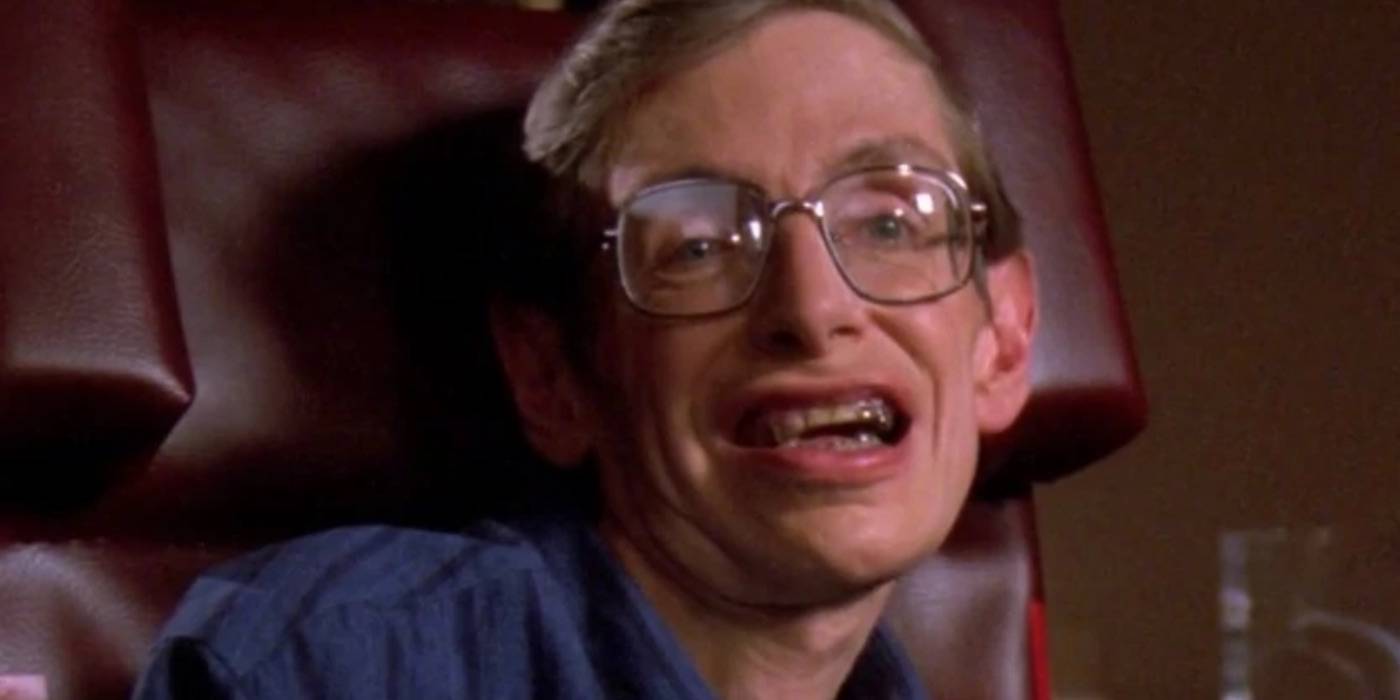
In conclusion, Stephen Hawking’s appearances on “Star Trek” exemplify the profound intersection between science and popular culture, showcasing how fiction can inspire scientific inquiry and imagination. His guest spots not only highlighted his unique insights into the universe but also served to bridge the gap between complex scientific concepts and a general audience. By embracing the themes of exploration and the quest for knowledge inherent in both his work and “Star Trek,” Hawking left an indelible mark on the series, reinforcing that the pursuit of understanding our universe is a journey worthy of the greatest minds.